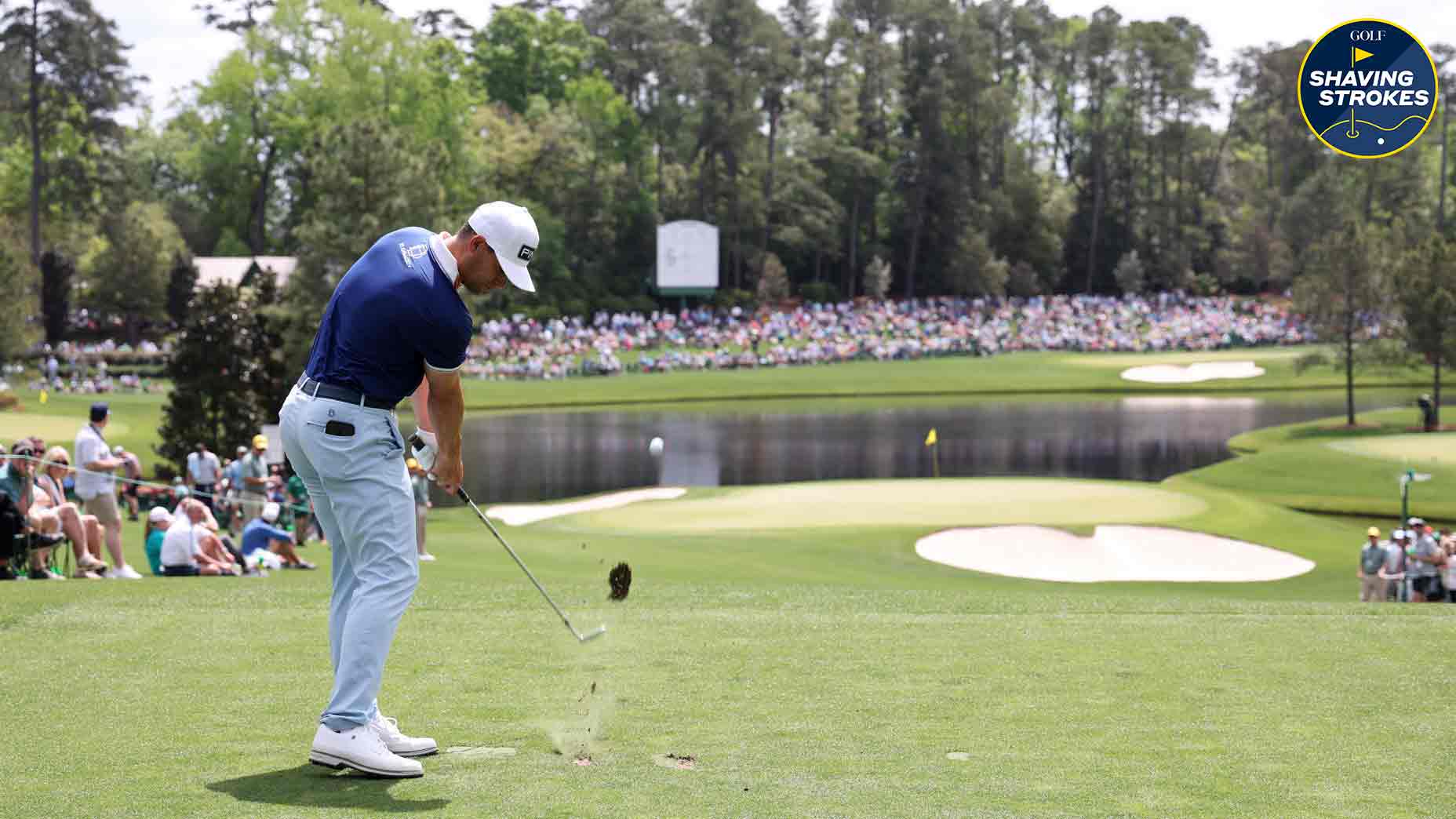
If you’re not playing from the right tee box, you’re only making golf harder for yourself.
Getty Images
Until recently, I always just defaulted to playing from the middle tee box (of three options), thinking it was the best option for my game. Then I talked to a couple GOLF Top 100 Teachers about this, and they told me to try playing from the front tees.
Naturally, I was a little bit skeptical. After all, I hit my drives pretty far, so I’m not necessarily someone who needs to shorten the course. Plus, there’s a certain perception about playing from the front tees — whether that’s right or wrong.
But I gave it a try and the results were actually incredible, with me shooting 1-over during a recent round in Canada, and then following that up with a score of 4-over during another round.
Playing from the front tees has helped build my confidence, forced me to use a diverse set of clubs on approach shots, and has led me to hitting more greens in regulation (a key barometer when it comes to scoring low).
Since golf is already hard enough, could playing from the front tees benefit you like it has me? More importantly, is there a way to determine which tee box is best for your skill level?
GOLF Teacher to Watch Todd Casabella helps answer those questions, and says there are four factors to consider before you head to the first tee box to begin your round. Check out his suggestions below.
Are you playing from the right tee box? Here’s how to find out
“Most golfers have the goal of one day moving to the back tees, otherwise known as the ‘tips,’” Casabella says. “However, playing a golf course that’s too long can be more than just challenging, it can change the entire strategy for a particular hole, making that hole play differently than the golf course architect envisioned — and leading to a round that’s less enjoyable for the average golfer.”
Casabella provides a good example of this from his club’s course, Barrington Golf Club, in Ohio.

Image via Todd Casabella
“For instance, hole No. 4 at my home course is an average length par-4 with a slight dogleg left — making it a great risk-reward tee shot,” Casabella adds. “The hole has fairway bunkers in the left rough landing area of the tee shot (about 220 yards), but the fairway runs downhill, so you can leave yourself with a 100-yard shot, or less, into the green if you take the risk off the tee.”
However, Casabella warns that any player who comes up short with their tee shot is more likely to experience all sorts of potential danger — like the fairway bunkers, rough, or longer shots into the green.
“If you come up short with your drive, you’re left with a middle-iron or more from the fairway bunker into the green,” he adds. “Pull it left, and you bring out-of-bounds into play. Bail out right, and you end up with a long approach from the rough. You have the option of playing safe to the fairway just right of the bunker, but, again, this will leave you with a longer approach shot.”
While the example hole that Casabella gives is a fun tee shot, it’s clearly a difficult one if you’re not playing from the correct tee box, and puts the pressure on to hit a perfect drive to avoid scrambling the rest of the way.
“If you’re playing the course too long, you’re required to hit driver to the right of the fairway bunkers [with precision],” he says.
This is why Casabella lists four things to consider when deciding which tee box is best for you.
1. If you have to remove a headcover and use a wood or hybrid on nearly every par-3, you’re playing tees that are too long for you.
2. When you’re only using a wedge into almost every green, you’re playing the course too short.
3. If you aren’t hitting a wedge into half of the greens during the round, you’re playing a course that’s too long.
4. If you can hit all the par-5 holes in two, you’re playing the course too short.
Adds Casabella: “Pick the right tees that make the golf course fun to play, and the way the architect designed it.”
So if you’re stuck in neutral and can’t quite reach your golf goals, use Casabella’s tips above to decide whether or not moving up a tee box can help. It might just help you regain some confidence and, like me, lead to the lowest round of your life.
Voice Caddie VC4 Golf GPS
$129.99
VC4 is a smart GPS rangefinder that tells not just the distance to the middle of the green, but also provides elevation changes, distance to front and back, and locates the landing point of the ball and gives you the carry distance.
Equipped with high capacity battery that can last up to 54 holes. When the battery gets low, it calculates remaining holes and automatically goes into Power-Saving mode. Quick charge is available via USB-C charger which comes with the purchase.
View Product





